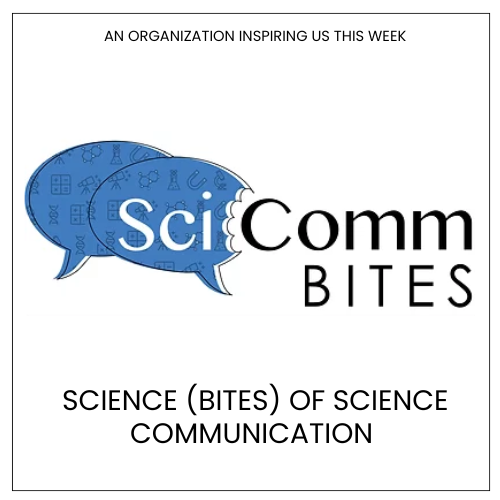CivicSciTV - Questions of the Day
From the lab to the classroom & beyond: Prof. Nannas shares insights from her science engagement at Hamilton College in New York State
Fanuel Muindi interviews Dr. Natalie Nannas, Associate Professor of Biology at Hamilton College, (a private, liberal arts college in New York State) about her work integrating the basic research she conducts around how genetic information is packaged within chromosomes, and doing public engagement. Dr. Nannas explains that her engagement work began during college and now involves students in hands-on research, teaching them to communicate scientific ideas to wider audiences. She adds that an important aspect of her research and teaching is asking students to take the knowledge they have gained and engage a broader audience.
During the pandemic, she launched the SciKids Network on YouTube to provide kids with accessible science activities they can do at home. She shares that students often find science communication both challenging and rewarding. When asked about measuring impact, Dr. Nannas reflects on the challenge of tracking outreach success, noting, ‘I think it will be important to have metrics by which we can measure what is our reach, what is our impact… ways that we could then pivot to be more impactful.’ Looking ahead, she hopes to expand the channel’s STEM content and collaborate with other educators to broaden its reach.
Chapters
0:00 CivicSciTV Intro
0:35 Meet Dr. Nannas
1:55 Discovering Genetics
3:25 Engagement roots
5:10 NSF grant
8:42 Science outreach
9:07 Measuring impact
11:04 SciKids Network
13:14 Student feedback
16:25 SciKids audience
17:18 Channel goals
18:47 Community support
22:35 Needed support
24:28 Advice to faculty
25:26 Advice to students
26:30 Setting goals
27:27 Civic science future
Ongoing Analysis
Open Questions for Taking Action: Several questions remain regarding how to scale and sustain these public engagement initiatives. They include the following: How can funders and universities support faculty to integrate public engagement into their research and teaching? What metrics should be used to evaluate the success of programs like the SciKids Network? How can partnerships with local community groups, like those Nannas has developed, be expanded and formalized to ensure long-term impact? Additionally, what funding mechanisms can be implemented to support student involvement in outreach beyond the typical semester timeframe?
The Bottom Line: Dr. Nannas’s work demonstrates the power of integrating research with public engagement to make science more accessible. By involving students in real research and encouraging them to communicate their findings, she helps demystify science for broader audiences. Her efforts through partnerships and the SciKids Network she is developing offer a model for faculty looking to provide students with opportunities to engage diverse communities with science. The key challenge ahead is developing the right tools to measure impact and ensure the sustainability of such efforts.
Fanuel Muindi is a former neuroscientist turned civic science ethnographer. He is a Professor of Practice in the College of Arts, Media, and Design at Northeastern University where he leads the Civic Science Media Lab. Dr. Muindi received his Bachelor’s degree in Biology and PhD in Organismal Biology from Morehouse College and Stanford University respectively. He completed his postdoctoral training at MIT.

-
Civic Science Observer4 weeks ago
What are the objectives of the Neurotech Justice Accelerator at Mass General Brigham?
-
Civic Science Observer2 months ago
Dear Colleagues: Now is the time to scale up public engagement with science
-
Civic Science Observer2 months ago
Weekend Watch: At Boston College, the McMullen Museum of Art presents “Wonders of Creation: Art, Science, and Innovation in the Islamic World”
-
Civic Science Observer3 days ago
Dear Colleagues: Help us understand the national impacts of federal science funding cuts on early career researchers in academic laboratories
























